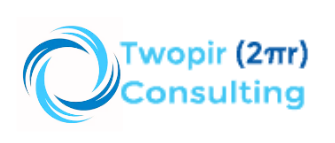Unleashing the Power of Salesforce Einstein Case Classification: A Step-by-Step Guide to Configuration and Optimization
To begin, let’s define the Einstein Case Classification: Machine learning is used by Salesforce’s Einstein Case Classification tool to suggest or automatically fill up fields on Case records. When recommending or populating picklist or checkbox field values, Einstein Case Classification always refers to an organization’s most recent six months of closed cases. In other words, it takes the guesswork out of filling out case data so that agents may quickly, accurately, and consistently settle cases.
Now that we are aware of what it is, let’s begin configuring it.
Step 1: Obtaining the necessary licence is the most crucial step in this process. With the Service Cloud Einstein add-on licence, you can access the premium versions of Einstein Case Classification and Case Wrap-Up. Five models are allowed per app under this licence. Automatic field updates and Einstein Case Routing are also included in Einstein Case Classification. Speak with your Salesforce Account Executive about upgrading.
However, if you only want to try, you can use this link to build a scratch organisation. Selecting Classify Citizen Requests is recommended.
Step 2: We are ready to get started at this point. Enter Einstein Classification in the Quick Find box in Setup, after which you should choose Einstein Classification. Next, switch on Einstein Classification Apps by clicking the toggle.

Step 3: On the Einstein Classification setup screen, click Get Started. Step 4: Choose Case Classification on the following screen, type in the name of your model, and then click the next button.
Step 4: Choose Case Classification on the following screen, type in the name of your model, and then click the next button. Step 5: This is a crucial stage where we must inform the system about the cases for which the values should be anticipated. So, you can request that the model take into account all new Cases or Cases that are particular to a business unit or a category.
Step 5: This is a crucial stage where we must inform the system about the cases for which the values should be anticipated. So, you can request that the model take into account all new Cases or Cases that are particular to a business unit or a category.
Step 6: We have now chosen which fresh cases will receive forecasts, but where does this prediction come from? To create the prediction model, the model takes into account the currently open cases. You can choose to use either all of the most current cases or certain cases.
Step 7:The next step is to decide the field values you need to base your prediction on.
Step 8: After clicking the next button on the screen, you will get something resembling a summary of everything we have accomplished. The predicted fields are listed in the table at the bottom. It’s vital to keep in mind that fields should have a variety of values; if there are too many fields with values that are practically identical, such as 10,000 records where the Priority is all Medium or Low, the field will fail. The minimal amount of data your organisation should have to develop the model is 400, which is insufficient.
It’s crucial to have various values because this is a frequent mistake.

Step 9: After clicking Finish, the job is only partially complete.
Step 10: Build your Classification Predictive Model to complete the process. Thereafter, pick the model name on the Einstein Classification Setup screen. The Setup tab can be selected. Choosing Remove from the Action menu will allow you to delete a field from the model. Choose Edit from Configure Data’s drop-down menu to add fields. Now that the model has been generated, you may click Build.
0 
It depends entirely on how much data your organisation has how long this will take. Whenever the build is complete, Salesforce will send you an email.

Step 11: Setup Field Prediction Settings now that we are getting close to the finish line. Here, we are requesting that the built-in model determine the degree of prediction automation. Einstein suggests the top three field values for each field in your model at the lowest level of automation. Instead, you can instruct Einstein to pick and save the best value on its own.
You can do this by choosing a field and clicking edit under Customize Predictions. As an alternative, click edit next to a list field.
You are instructing the model to display the highest values for the fields that require prediction in the section below. The model will display the values but won’t make any choices or settings for you. The prediction confidence threshold, which is your minimum necessary confidence level for choosing the best value, must be set here as well. The possibility that the suggested value for the field is accurate is represented by the prediction’s confidence level.
We can also instruct the model to automatically fill the fields with the best possible values. To activate the Automate value, click the Automate value tab. With the BEST label next to the value, the field will display the best value that has previously been chosen.

We can also instruct the model to automatically fill the fields with the best possible values. To activate the Automate value, click the Automate value tab. With the BEST label next to the value, the field will display the best value that has previously been chosen. Once more, you must provide the prediction confidence threshold.

Step 12: Click Save & Close. The settings for the predictions are immediately updated and are visible in the field list. Now you can press the Activate button.

Step 13: Giving users access to Einstein Classification . Once you completed the second step, a new permission set for Einstein Case Classification was automatically generated. Assign users to the permission set and manage assignments.
